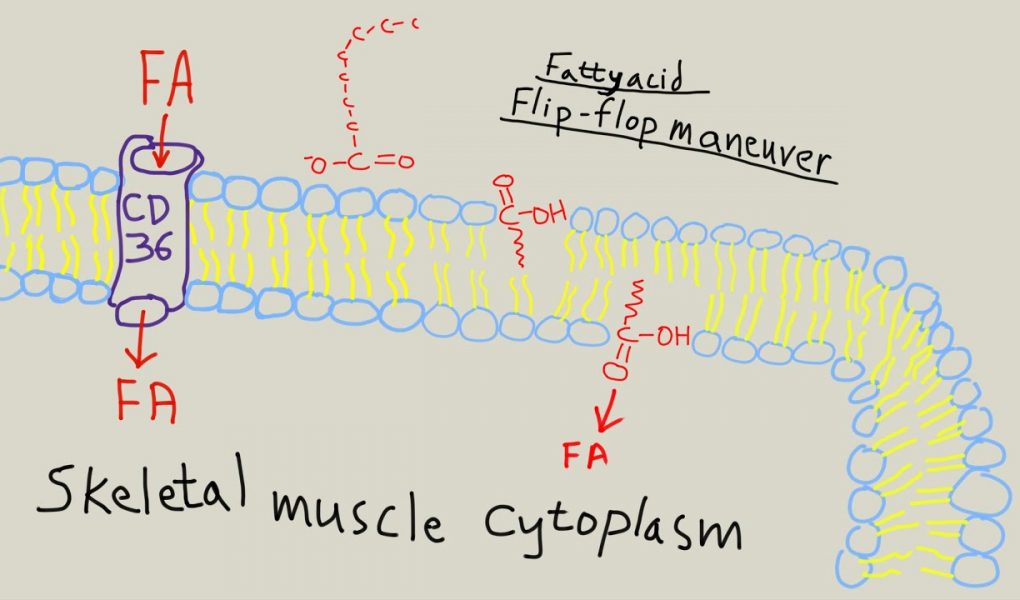Research of James Hamilton suggests that skeletal muscle membranes take up fatty acids from the blood, in concentration dependent fashion: ie. more fat you eat, the more fat goes into skeletal muscle. This suggests that human metabolism is not made to routinely handle large amounts of fat. Human physiology is very much like other herbivores. We of course can eat fat on occasion, but routine eating of high fat diets leads to insulin resistance. Insulin resistance leads to type 2 diabetes. Type 2 diabetes leads to diabetic retinopathy, nephropathy, microvasculopathy. Lecture also covers cardiolipin structure. Cardiolipin is a 4 tailed phospholipid, relatively unique to the inner mitochondrial membrane. Cardiolipin typically has 4 linoleic fatty acids C18:2. PUFA’s like linoleic acid are highly vulnerable to lipid peroxidation. The mitochonria is the main source of ROS in the human body. When excess dietary lipid overwhelms the mitochondria electron transport chain with an excess of electron carriers, the IMM gradient goes to high, and the direction of electron transport reverses. This leads to a cascade of harmful reactions. If cardiolipin is damages, its shape becomes distorted, and it loses connection to cytochrome C. Cytochrome C then diffuses away from IMM, and induces apoptosis.
source
Diabetes part 5, muscle membrane flip flop fatty acid & Cardiolipin mitochondrial lipid peroxidation


